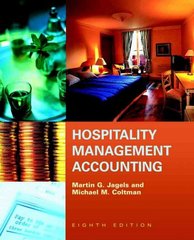Question
Andy incorporated his business and put $20,000.00 into the corporation. The corporation manufactured furniture. An employee of the company delivered a couch to a customer
Andy incorporated his business and put $20,000.00 into the corporation. The corporation manufactured furniture. An employee of the company delivered a couch to a customer who complained about the colour. The employee became so angry that he shoved the customer, who fell and suffered physical harm. On these facts, which of the following is false?
| a. | If the corporation went bankrupt, Andy would not be personally liable for any debts | |
| b. | The employee is liable for his tort and his employer is also liable | |
| c. | Andy himself is vicariously liable for the damage caused by the employee | |
| d. | The employee is liable for the tort of battery |
A limited liability partnership involves:
| a. | A partnership in which some of the partners limit their liability to the amount of their capital contributions and are not active in the conduct of the business | |
| b. | A partnership in which partners who are not negligent are not personally liable for losses caused by the negligence of another partner or of an employee directly supervised by another partner | |
| c. | A partnership in which partners who are not negligent are personally liable for losses caused by the negligence of another partner or an employee directly supervised by another partner | |
| d. | None of the above |
Which of the following statements is true:
| a. | A principal can hire an agent in order to protect the principal from liability | |
| b. | A principal can hire an agent to enter into contracts on behalf of the principal | |
| c. | An agent can hire a principal in order to protect the agent from liability | |
| d. | An agent can hire a principal to enter into contracts on behalf of the agent |
Three students in a business faculty created a computer program that compared various retirement plans. They decided to go into business together to offer their services directly to the public. After doing a feasibility study, they felt there were profits to be made. For tax reasons, they decided not to incorporate. Each contributed $5,000.00. In a short written agreement, they agreed that all three would be actively involved in the management of the business, that all three would work to update the program, that they would share the profits equally, and that they should not be viewed as partners. Based on these facts, which of the following statements is true?
| a. | They are not partners because they do not have a partnership agreement | |
| b. | They would be considered partners by law despite their expressed intention to the contrary in their agreement | |
| c. | If one partner dies, the partnership would be dissolved even if they state otherwise in their agreement | |
| d. | They are not partners unless they realize a profit from their enterprise |
To succeed in an action for negligence against a professional, the plaintiff must prove that the professional breached the standard of care. What is the standard of care imposed on a professional?
| a. | That the professional acts in accordance with the standard contracted for by the client | |
| b. | That the professional acts sincerely and with goodwill | |
| c. | That the professional acts to the best of his or her ability | |
| d. | That the professional acts as a reasonably competent professional |
What is strict liability?
| a. | Strict liability is when compensation for loss is dependent upon fault. | |
| b. | Strict liability is when an insurance company pays for the liability. | |
| c. | Strict liability is when liability is strictly enforced. | |
| d. | Strict liability is when a person is liable regardless of fault. |
Step by Step Solution
There are 3 Steps involved in it
Step: 1

Get Instant Access to Expert-Tailored Solutions
See step-by-step solutions with expert insights and AI powered tools for academic success
Step: 2

Step: 3

Ace Your Homework with AI
Get the answers you need in no time with our AI-driven, step-by-step assistance
Get Started


